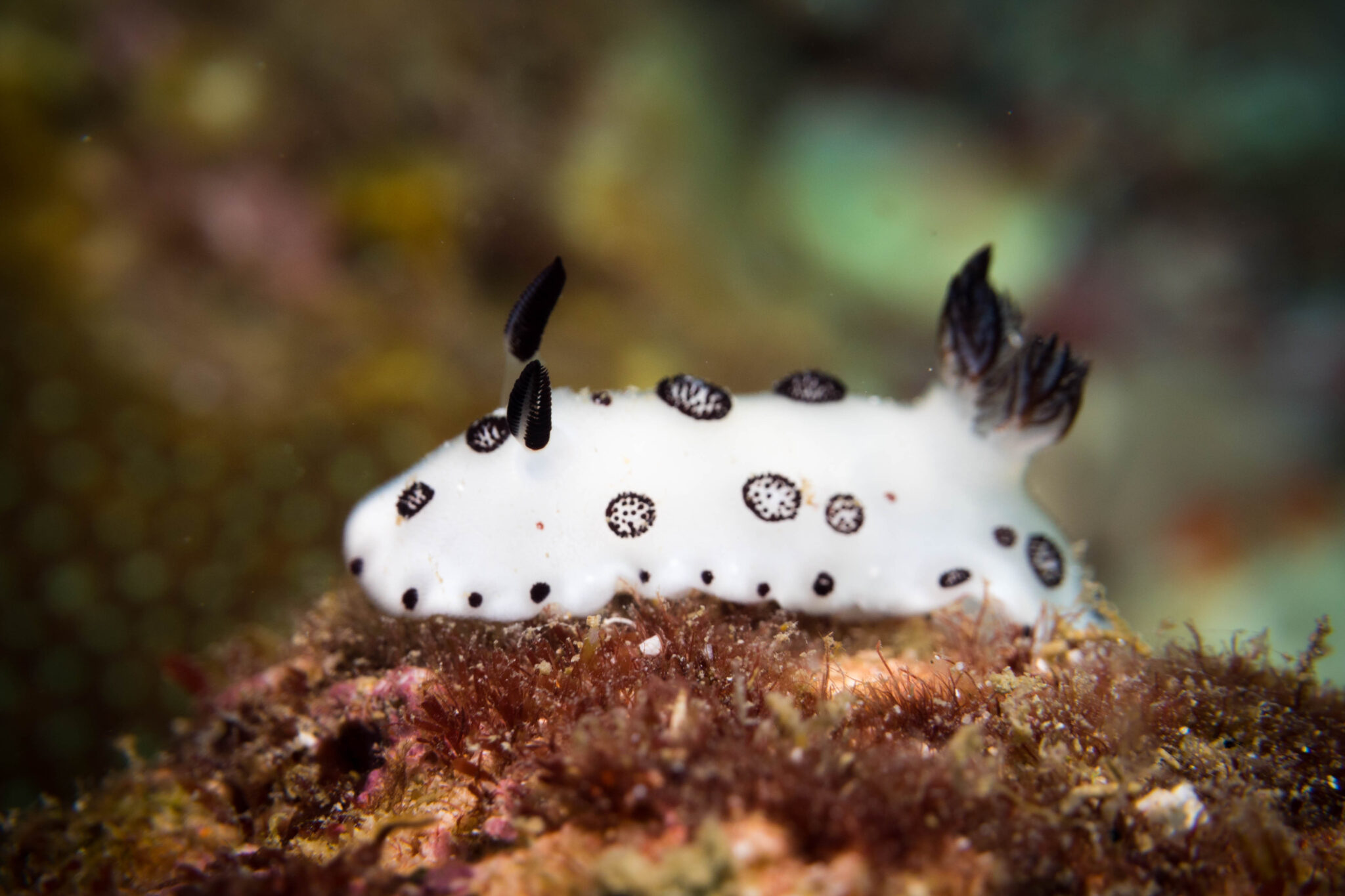Sea bunnies are exciting types of sea slug mostly found in Aplysiidae. They are also known as Jorunna parva.
Do you want to know more about Sea Bunny?
Sea bunnies resemble cute fluffy rabbits. They are found in the Indian Ocean, Phillippines, and Jaan coats. The most interesting thing about sea bunnies is their soft, fuzzy bodies and wiggly ears that also work as sensory organs.
These little bunnies have gone viral on social media. People are so curious about their nature, anatomy, habitat, and diets. If you are also curious about them, then hop through 12 fascinating facts about the sea bunny, Jorunna Parva.
About Sea Bunny
In the 1930s, renowned Japanese marine biologist Kikutaro Baba first described a description of these tiny, adorable, and sinuous marine creatures. Their tiny and powerful appearance is actually subject to scientific study.
| Scientific Name | Jorunna parva |
|---|---|
| Phylum | Mollusca |
| Class | Gastropoda |
| Clade | Euthyneura |
| Order | Nudibranchia |
| Family | Discodorididae |
| Genus | Jorunna |
| Size | <1 inch long |
| Lifespan | Few months to 1 year |
| Diet | Sponges, Jellyfish, Algae |
| Habitat | Coral Reefs, Seaweed Beds |
| Predators | Crabs, Fish, Marine Snails |
| Range | Indo-Pacific Ocean |
Sea Bunnies is Jorunna Parva’s nickname. These little sea lugs are a species of Dorid Nudibranch. They can survive around humans. But their nature seems very shy.
These cute little animals have a very short lifespan. They can survive only a few months. These are hermaphrodite animals that have both male and female reproductive organs.
They produce eggs by interchanging sperm and fertilizing later. They lay their eggs in clusters on surfaces such as rocks, corals, and algae.
These are harmless to humans. Several marine predators, like larger sea slugs, crabs, and some fish species, often prey upon them. These are so essential for maintaining a healthy ecosystem.
How Do Sea Bunnies Look Like?
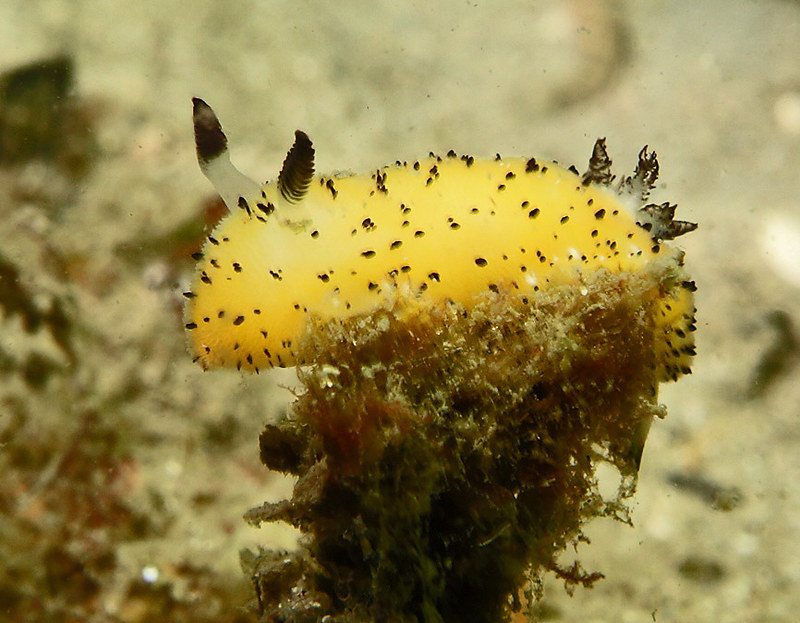
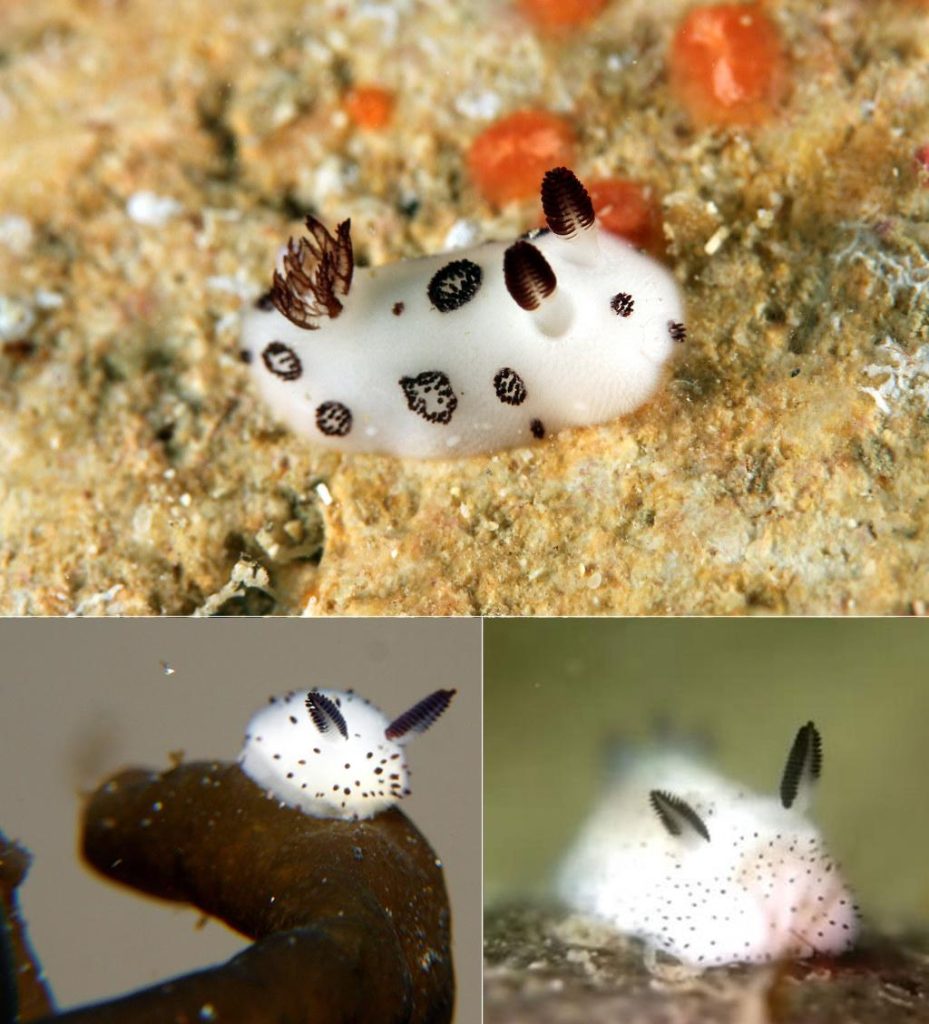

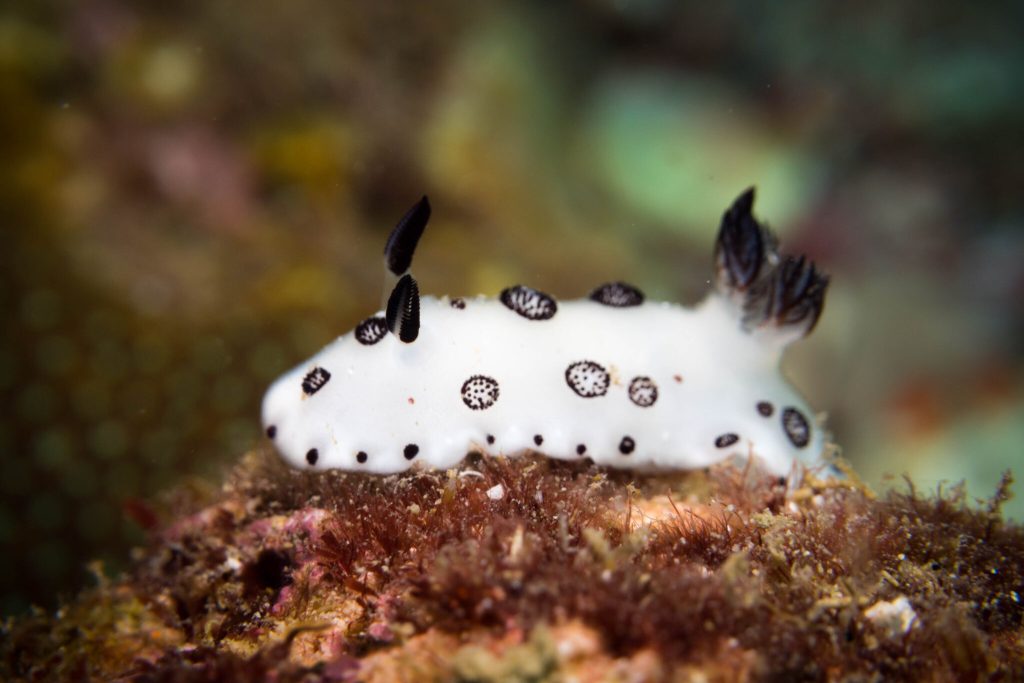
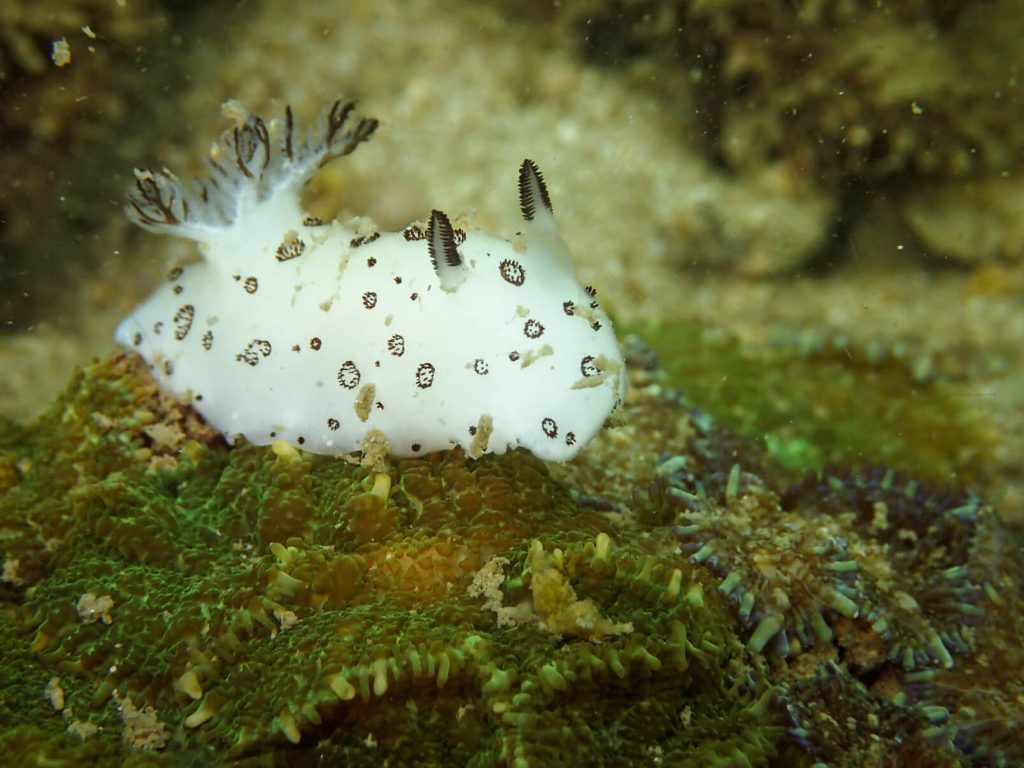
The appearance of these marine slugs is one of their most interesting things. Regarding the sources, bunnies are named after their look. Their body surface area is covered with print and fuzzy hair. They are known as Caryophyllidea, which also helps in their sensors.
According to belief, the sea bunny starts off in a shell during its early life stages. As it matures, it sheds this shell.
Overall they will look like ocean rabbits at first look. The backside of the bunny looks like flowers. Their ears resemble antennae, and these are one of their biggest sensory organs. These antennas are known as rhinophores.
These animals are popular on the internet for other backs and white spots all over their body. However, in reality, they are mostly found in yellow and orange spots. These are so small that you might find them only less than an inch in size.
Although the little bunnies are tiny small in size, they have excellent skills in sensing and detecting any environment around them. They can easily detect if there have a predator around them.
Anatomy of Sea Bunny: Sensory Organs
The sea bunny’s internal and external anatomy are both featured to help the little creatures for surviving in the sea world. Both their anatomies are unique to any other sea slugs.
External Anatomy
These has a soft and fuzzy body covered with a dense layer of small, hair-like projections called caryophyllidia. These four make it look like a fluffy cotton ball or bunny. Their body size is very tiny and extends a maximum of 3 cm.
They have protuberances that are needed for sensory functions. You will find them mostly in black and white color. However, they carry multiple colors like brownish-yellow or green. You will see some patches all over their body.
Tentacles are two pairs that bunnies carry over the front side of the body. These are usually set in two pairs. One is short, and the other one is bigger and thinner. This is necessary for detecting changes in the SE. With these tentacles, bunnies can detect both chemical and physical changes.
Rhinophores are another external part of their anatomy. It is used to detect smells around their atmosphere.
Internal anatomy
Sea bunny has a simple digestive system that includes a mouth, esophagus, stomach, and intestine. Their skeleton is hydrostatic, which gives the bunny more strength to move swiftly in the water.
These are so tiny that they have a circulatory system with a small heart that pumps blood through vessels to the rest of their body.
Sea bunnies rely on the gas exchange through their skin and the absorption of oxygen and carbon dioxide through the water. Its respiratory system has gills that help to maintain the breathing system underwater.
Their excretory system helps to filter out toxic elements from the body. Their nervous system includes several sensory organs that respond to changes in the environment.
What Does Sea Buny Eat?
These little sea animals generally survive on sponges. They have the ability to steal toxic elements from their food. Se sponges have toxins, and eating them makes these little bunnies poisonous. They are glad to consume this food while protecting themselves from the toxins.
They primarily feeds on soft and squishy tiny creatures called sponges. They can make up a major portion of their diet and serve as the primary source of their food.
Their diet of little bunnies is an interesting field of medical study. The medical industry believes sponges might have helpful chemical compounds to survive.
However, they can also eat seagrass, algae, sea vegetation, and other tiny animals underwater.
Where Do Sea Bunny Live?
Sea bunnies live in seawater, where they can live peacefully. They are mostly available around the Indo-Pacific Ocean from South Africa to the Central Pacific and the western pacific ocean.
These would be korea, japan, Papua New Guinea, and certain parts of the Philippines. They are also commonly spotted around Hawaii, California, Australia, phillipines.
These little animals find themselves comfortable under shallow water. The soil and rock are needed to give them hiding space for living.
Reproduction System of Sea Bunnies: Hermaphrodite
Sea Bunnies have a Hermaophrodite reproductive system. In this system, animals are able to produce both sperm and eggs cless within their own body.
However, they must find potential mates for mating. In general terms, the animal is both father and mother its children.
In this system, they can fertilize their own eggs and sperm within one body. However, that doesn’t mean they don’t have sex with other bunnies.
Mating is necessary, and during this time, they will exchange the sperm and ultimately fertilize the eggs.
Do Sea Bunnies Make Good pets?
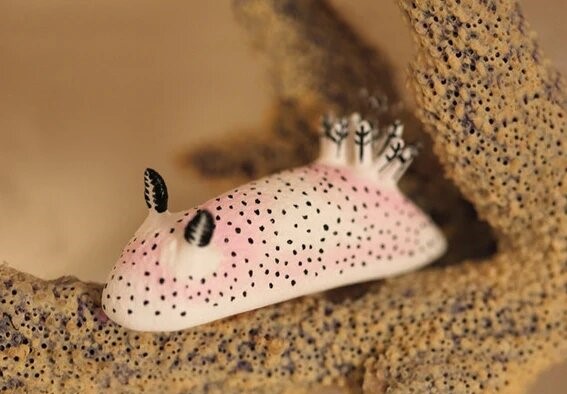
No, it is not recommended to keep se bunnies as pets. The main reason behind it would be their comfort and nature of living.
These bunnies need a silent and peaceful cold atmosphere under seawater. They live their life for a very short time. Putting them outside of their comfort zone will be threatening to their lives.
They are not harmful and dangerous if you don’t take them out of their habitat. However, these little pals are defensive and shy under different circumstances.
Even they are not legally accepted to keep as pets. Bunnies are quite rare and necessary to maintain a balanced ecosystem. So, it is not possible to keep them as pets.
Are Sea Bunnies Safe For other Creatures?
Despite their cute look, sea bunnies are not safe for others. They intake toxic elements and release poisonous elements as well in the water. However, there is nothing to worry about.
Tiny bunnies love living n their own. They hardly go in contact with other living beings. As long as they are comfortable in their own habitat, they will cause no harm to others.
Natural behavior they are absolutely safe. These are not aggressive but still poisonous. If you don’t remove them from their natural habitat, they will not stand harmful. They will be safe for other sea creatures regarding their natural living style.
12 Fun Facts About The Sea Bunny
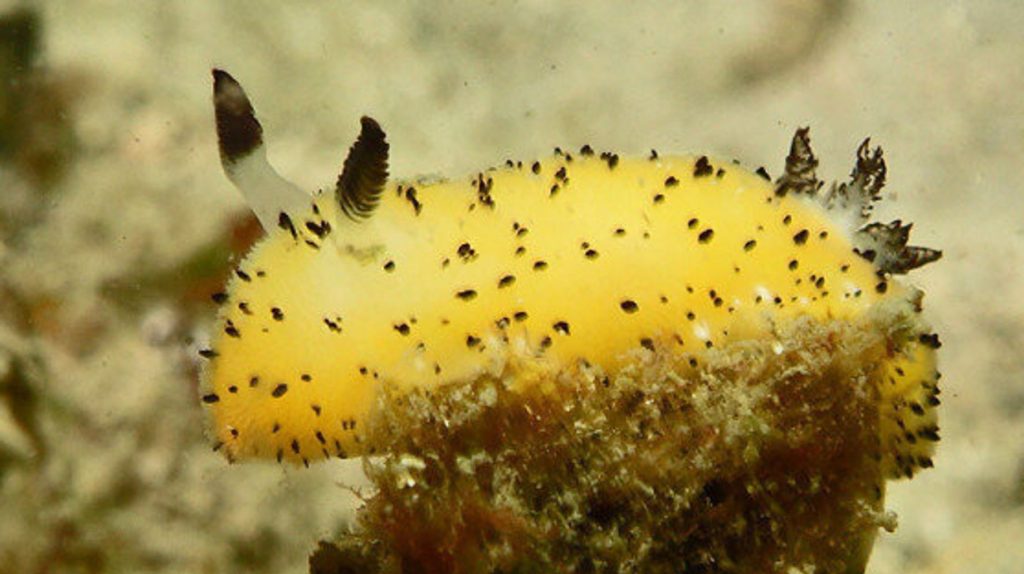
There are hundreds of sea bunny facts about these cute creatures. From their look and living style to their food and behavior, berthing is the talk of the town these days. Especially people are going crazy after seeing their pictures online. Marine creatures are always something interesting to know about.
1. Masters of Camouflage
Blending beautifully into their surroundings with an impressive camouflage ability, sea bunnies disappear amongst coral reefs and seaweed beds. Their colors even shift slightly to match whatever they are eating at the time. This helps them vanish from threats.
2. Toxic Food Sources
A sea bunny’s diet primarily consists of toxin-laden sponges and some algae, jellyfish, and other small nudibranchs. Concentrating the toxins within their tissues makes sea bunnies unpalatable to potential predators. This unique self-defense allows them to survive without a protective shell.
3. Expandable Stomachs
Sea bunnies can expand their stomachs to 2-3 times their normal size to consume prey as big as or even larger than themselves! Their impressive elastic stomachs allow them to eat whole animals like sponges or jellyfish easily.
4. Hanging Upside Down to Feed
While munching on sponges or algae, sea bunnies will hang upside down by a mucus strand secreted from their uniquely adaptable foot muscle. This odd and endearing position allows them to scrape food into their mouth while avoiding hungry predators.
5. Hermaphroditic Reproduction
As hermaphrodites, all sea bunnies produce both sperm and eggs within the same individual. When mating, two partners exchange sperm to fertilize each other’s eggs. This unique dual-sex reproduction provides mating flexibility but limits genetic diversity.
6. Multiple Offspring
A single sea bunny can lay up to 30 fertilized eggs. Attached to a surface in a gelatinous ribbon, these egg clutches may contain thousands of developing sea slugs! The eggs hatch into tiny planktonic larvae.
7. Short Lifespans
Sadly, sea bunnies live fleeting lives spanning only months. Their short lifespans put pressure on these slugs to mate early and often! Sea bunnies hatch from egg cases as planktonic veligers then metamorphose into their fluffy adult form.
8. Shelled Veliger Larvae
The young of the sea bunny go through a larval stage known as a veliger, common among mollusks. At this point, they have a protective shell and can swim freely as plankton before settling down into their sea bunny form. The shell is shed as they metamorphose.
9. Poison Storage in Caryophyllidia
The toxin-producing algae and sponges that sea bunnies eat provide chemicals for their self-defense system. Special cells in their external caryophyllidia store these absorbed toxins to deter potential predators from eating them.
10. Sensory Rhinophore Organs
A sea bunny’s rhinophore organs detect scents drifting in the currents that signal food or mates nearby. These elongated protrusions give them excellent sensory awareness and look like bunny ears. But they detect chemical signals, not sound waves.
11. Delicate Gills
Their gills sit exposed on their backs rather than protected internally, leaving sea bunnies vulnerable. But their impressive camouflage and noxious secretions keep them safe. Though called nudibranchs, or “naked gills”, they do have a layer of skin protecting organs under those lovely external antennae.
12. Biomimetic Molecules
Researchers now study Sea bunnies’ tissues to uncover new biomimetic molecules. These natural chemical compounds have innovative applications from sunscreens to antibiotics to surgical sealants. Their specialized cells could hold secrets for medicine.
FAQ:
Can I touch a sea bunny?
No, you should not attempt to touch a sea bunny in the wild. These creatures are very small, fragile, and need to remain in their natural habitat. Their soft bodies could easily be damaged by human handling. Plus, they accumulate strong toxins from their diet which could sicken someone exposed to it.
Are sea bunnies venomous?
Yes, sea bunnies utilize toxins acquired from their sponge diet to defend themselves, meaning they are venomous to potential predators. The toxins are contained within their tissues and would only pose a risk if a sea bunny was ingested, which is very rare.
Are sea bunnies edible?
No. Their accumulation of powerful toxins gained from food makes sea bunnies inedible and poisonous to humans and marine wildlife alike.
Where are sea bunnies found?
Sea bunnies reside in tropical and temperate coastal waters of the Indo-Pacific region, spanning areas off South Africa, Japan, Indonesia, the Philippines, California, and Australia. They inhabit relatively shallow nearshore reefs and rocky areas.
Do sea bunnies have eyes?
No. Sea bunnies do not possess eyes or vision. Instead, they rely on sensory rhinophores (“ears”) and receptors in their flesh to detect food, mates, predators, and suitable habitats.
Is a sea bunny an insect?
No. Sea bunnies are marine mollusks in the group Nudibranchia, a branch of sea slugs that shed their shells after their larval stage. They are more closely related to snails and octopuses than insects.
What is the cutest sea animal?
Many people consider sea bunnies among the cutest sea creatures due to their irresistibly fluffy appearance resembling a rabbit, exaggerated “ears”, and harmless nature. Other top contenders for cutest marine animal include sea otters, seals, seahorses, and even some sharks.
Who eats sea hares?
Sea hares are nudibranchs preyed upon by sea anemones, crabs, lobsters, starfish and some fish. But toxic algae blooms have killed more sea hares in recent years. While related in taxonomy, sea bunnies occupy slightly different ecological niches than sea hares.
Do sea bunnies have tails?
No. The small protrusion at a sea bunny’s rear is actually its feather-like gills rather than a tail. This is used to exchange oxygen from surrounding seawater.
Can I buy a sea bunny?
No. Sea bunnies are wild marine animals not suitable as personal pets. Removing them from tropical reef ecosystems could be damaging. Plus their specific dietary and habitat needs would be impossible for non-specialists to meet properly in captivity.
Wrap Up
Sea Bunnies has become quite popular on social media platforms such as Instagram. Now, this is a favorite subject among underwater photographers as well.
These sea slugs are a field both for social media influencers and medical researchers. Their cute and cuddly appearance can make anyone happy.
Aside from their look, little bunnies are detected as one of the most unique marine species. This article has mentioned a lot of details about them. Reading them, you can do great research further about them.

